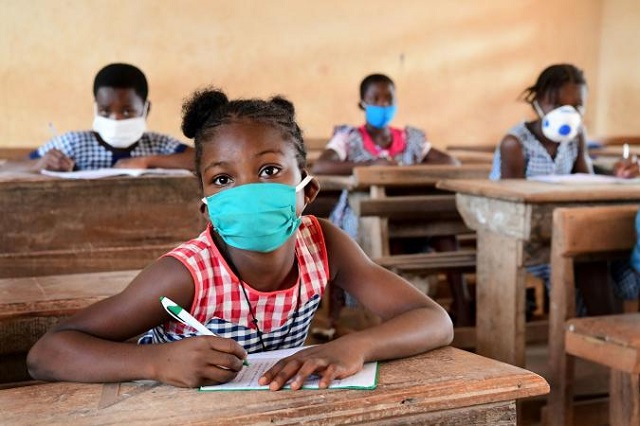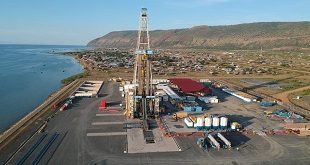
Kampala, Uganda | THE INDEPENDENT | As the Ministry of Education and Sports prepares for full reopening of education institutions, school inspectors say it will be impossible to reopen for all classes if the two-metre class social distance rule is not dropped.
In October last year, the government developed Guidelines and Standard Operating Procedures-SOPs that would see the phased reopening of schools. Key among them was hand washing, wearing of face masks, temperature checks and maintaining social distance in class and in dormitories for students in boarding.
In December – towards the end of the second term for candidate students – the department of education standards rolled out an inspection to assess the level of compliance of the SOP and schools’ ability to handle more students.
Uganda Radio Network has talked to several inspectors, school headteachers, and officers to share some insights and findings whose detailed report has already been tabled to the permanent secretary for consideration.
Janat Nakabugo Ssali, Wakiso District Inspector of Schools, attests that many schools they reached had compiled with the SOPs with the few students in Primary Seven, Senior Four, and Senior Six.
Nakabugo however says none of the schools they visited could handle even half of their normal enrollment under the current guidelines. “In other areas like provision of wash facilities, having temperature guns, and setting up COVID-19 isolation rooms schools seems to be very fine. But, the problem is space.”
In schools that this reporter visited before candidates broke off for holidays, learners had occupied several classrooms to meet the required social distance. For instance, at Nakasero Primary School, primary seven pupils, whose population is usually the least compared to other classes, had occupied six classrooms with another group studying from an open structure used for morning school assembly.
Several inspectors report that with the current options, to bring back all students would require schools to make arrangements to operate either morning and afternoon shifts, get an alternate-day attendance schedule or looking for additional space in terms of temporary structures.
However, not all the suggestions are new as the ministry had already provided for them in the current guidelines. Jimmy Kyagulanyi, the Kiboga District Education Officer, expresses the fear that the proposal to set up more structure might only help rural schools who big chunks of land.
“Temporary structure sounds like a good idea,” he says. However, it might go well with urban schools and he points out that even where it might be applicable it might lead to other challenges including the need for more teachers, and more desks among others.
Elia Ssebuyungo, Headteacher Busembatya SS in Bugweri District, says there is no way how the school can reopen for other classes without revising the class and social distance (para)meters.
Ssebuyungo whose school has a total enrollment of 1,200 students says the situation only allows for strict observance of washing hands, wearing a face mask and taking temperature, and minimizing socialization.
Dr Kedrace Turyagyenda, the Director of Education Standards at the education ministry, largely agrees with school heads and inspectors on the issue of available space in schools as per the required standards. She however notes that all are subject to discussion.
However, Dr Monica Musenero, a senior presidential advisor on epidemics, says that revision of the said two-metre social distance might not be possible.
Dr Musenero, says they can only recommend the revision of the social distance after administering of vaccines to learners or in event they have provided them with a treatment.
Kenya, which expects the vaccine next month, has reopened schools after a 10-month break imposed by the coronavirus pandemic. The country also seems to have a similar challenge of overcrowded classes and their government has emphasized construction of temporary to arrest the encounter.
However, several reports and videos shared by Kenyan mainstream media show normal class setting but with students in masks.
The East African newspaper has also reported that in preparation for reopening of schools, Rwanda has built 22,000 classrooms across the country which enabled schools to restart while observing social-distancing measures.
********
URN
 The Independent Uganda: You get the Truth we Pay the Price
The Independent Uganda: You get the Truth we Pay the Price



indeed but we are tired to grow older at home
I see pupils and students life is more at risk when they are at home y most of them are in straight, church, video halls where all sop’s are fully neglected and they live anormal life
I deed our children are getting spoilt let us look for the best solution
We should let schools reopen because it’s where most of the ugandans earn a living
Schools should provide pupils with fruits as it’s one of the ways to treat covid19
Atleast gov’t to let our children be back to school@be educated as we follow covid-19 guid lines
taban@gmail.com
taban@gmail.com we were welcome you back Mr President museveni I hope everything is going well our election was ended peacefully,what we need as student a reopening of schools and colleges.
We should let students go back to school because pupils and student s are going spoiled in the village,they will be preserved than the life at home
Students at higher institutions of learning can handle SOPs………..hope the masterminds could see that.